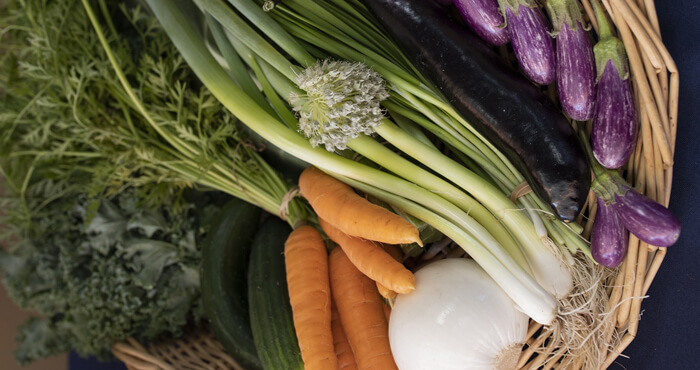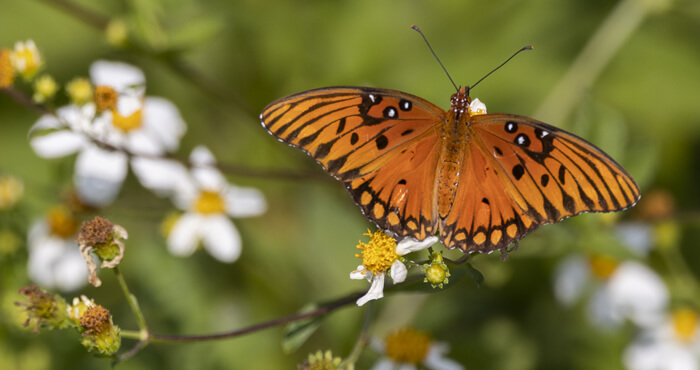
Cover Crops
Cover crops are an alternative way to manage soil fertility in agricultural systems; they can be a living mulch or incorporated into the soil as a green manure. Sometimes one crop can cover multiple needs.
Florida’s sandy soils tend to have low soil fertility as well as low water and nutrient retention because of their low organic content. Cover crops increase soil fertility by adding organic matter.
Farmers can grow cover crops between crop cycles (such as vegetables) or intercropped among crops (such as ground cover in orchards).
Cover Crop Uses
Cover crops are sown to:
- Control weeds through competition for available space, light, water, and nutrients
- Prevent soil erosion caused by heavy rainfall or winds
- Protect crops (such as watermelon) from sand blasting damage
- Retain and harvest residual nutrients that would be leached in the off-season
- Recycle and restore nutrients in a crop system
- Reduce select harmful nematode populations
- Create additional income (such as hay production)
- Provide mulch cover for row middles and/or mulched beds
- Provide habitat for beneficial insects and birds
Although cover crops have many benefits, improper selection of cover crop types can create challenges. Some may be too weedy, woody, and/or tall, which can interfere with cultivation and harvest. Others may harbor pests and diseases.
Some of these challenges can be avoided by cultural practices such as mowing, but the easiest way to prevent unwanted effects is to identify and plant cover crops that suit your needs.
Types of Cover Crops
The main distinction in cover crops is between annual cover crops intended for a season and perennial crops that will last for many years. Annual crops can be grains/grasses or legumes (those that produce nitrogen), and are either summer or winter crops. Winter cover crops are adapted to shorter, cooler days, while summer crops are better for hot, long-hour days.
Choosing a Crop
Species suited for cover cropping in Florida are listed below in Table 1. Because of South Florida's climate, winter cover crops may not be ideal choices for cultivation. Crops appropriate for South Florida are marked with an asterisk.
Cover crops can be chosen for purposes such as soil protection, nitrogen production, or creating residues for incorporation into the soil. Variables such as decomposition rates, herbage (biomass), and classification determine how well a cover crop is suited to a specific purpose.
Finding the best cover crop for your specific needs may take some patience and experimentation with different crops, crop combinations, management practices, and use of appropriate technology. Growing multiple species can increase the performance and adaptability of a cover cropping system, especially when growing conditions are less favorable for one of the species.
Cover cropping was a large part of past Florida farming practices, so it may be worthwhile to take advantage of the experience and knowledge of older farmers in your region who farm similar soils and have used cover crops successfully.
Table 1. Cover crops for Florida (*South Florida compatible)
| Crop & Seeding Date | Yield-Biomass (lbs / acre) | Yield-Nitrogen (lbs / acre) | Seeding Rate (lbs / acre) |
|---|---|---|---|
|
Annual Winter Cover Crops |
|||
|
Leguminous |
|
|
|
|
Crimson Clover |
1500 – 5000 |
35 – 120 |
20 – 25 |
|
Hairy Vetch |
2000 – 4000 |
35 – 150 |
20 – 30 |
|
Lupine* |
2000 – 4500 |
45 – 120 |
30 – 45 |
|
Grain |
|
|
|
|
Black Oats |
1500 – 3500 |
20 – 40 |
80 – 100 |
|
Winter Rye |
3000 – 6000 |
30 – 50 |
80 – 100 |
|
Annual Summer Cover Crops |
|||
|
Leguminous |
|
|
|
|
Aeschynomene* |
2000 – 4000 |
50 – 100 |
6 – 8 |
|
Cowpeas* |
4000 – 6000 |
50 – 90 |
6 – 8 |
|
Hairy Indigo |
7 – 10 tons of greenchop/acre |
80 – 150 |
6 – 10 |
|
Sunhemp* |
4500 – 10,000 |
90 – 180 |
30 – 50 |
|
Velvetbeans* |
2200 – 4000 |
50 – 85 |
30 – 50 |
|
Grain |
|
|
|
|
Sorghum-sudan |
6500 – 9500 |
55 – 80 |
24 – 30 |
|
Perennial Cover Crops |
|||
|
Leguminous |
|||
|
Rhizoma Peanut |
2000 – 10,000 |
50 – 130 |
80 – 100 bu of rhizomes/acre |
|
Grass |
|||
|
Bahiagrass* |
3000 – 8000 |
55 – 140 |
15 – 20 |
Adapted and excerpted from:
Y. Newman, et al, "Cover Crops (SS-AGR-66)," Agronomy Department (revised 12/2017).
RESOURCES
UF/IFAS Publications
- Agribusiness
- Agricultural Health and Safety
- Agronomy
- Crops
- Florida Forage Handbook
- Vegetables & Herbs
- Livestock and Poultry
- Nurseries and Greenhouses
- Florida Soil and Water - by County
- Sustainable Agriculture
- Weed Management in Field Crops and Pasture Grasses (WMG)
State & Federal Agencies
- Florida Department of Agriculture and Consumer Services (FDACS)
- Fish and Wildlife Research Institute—Florida Fish and Wildlife Conservation Commission
- Florida Department of Environmental Protection
- South Florida Information Access (SOFIA)—U.S. Geological Survey
- U.S. Department of Agriculture (USDA)
- U.S. Forest Service—USDA
- U.S. Environmental Protection Agency (EPA)
- U.S. Fish & Wildlife Service
- U.S. Geological Survey (USGS)



.jpg)

.jpg)